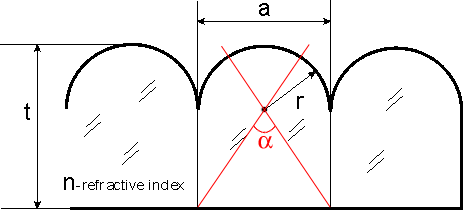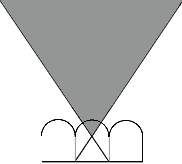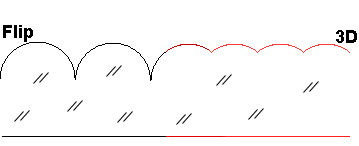System requirements
Glossary of Terms
How to use the program:
Beginners
(Please read)Output image settings (image size, resolution, alignment marks, type, arrangement)
How to use the program:
Lenticular sheet type
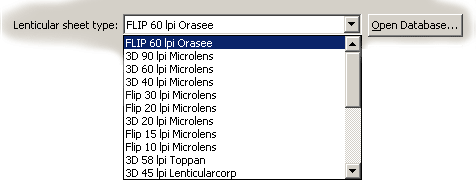
Before beginning the work, it is necessary to choose the lenticular sheet type. Click Open Database... to open the dialogue Lenticular Sheets Database:
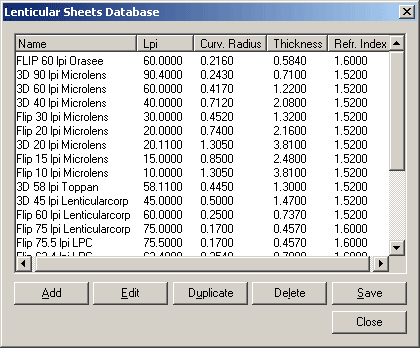
Here you can Add, Edit, Dublicate and Delete the items. Click Save to save your changes into the database. This facility allows you to make Lenticular sheet type entries into the database for your type of screen and printer. To enter the parameters for your Lenticular Screen into the database, click Add and Edit to open the Edit dialogue. Here you set the following values:

- Lenses per inch - frequency of lenticular sheet or microlens quantity per inch.
Lenses per inch = 25.4 / Period of lenticular in mm
Period of lenticular in mm = 25.4 / Lenses per inch
Although your Lenticular Screen may be stated as being say 25 lenses per inch, the frequency of the lenses in the lenticular sheet is not equal to the frequency quoted precisely. The value you enter into the database will depend on the printer model, the Printer Print Resolution (known as Dots per inch - DPI) and the desired viewing distance used. For each type of lenticular screen you enter into the database, you need to run a pitch test first to determine the precise LPI value of the Lenticular Screen to enter.
This value for any given lenticular screen will be different for each printer you intend to use. After using Pitch test open the necessary item in the database and change the Lenses per inch value to set the correct number. For example, the frequency of a lenticular sheet is equal to 72.2 lpi for my printer and not 72. The value is likely to be different for your printer. Determine the value using help10.htm and write this value in your database and save the database. Note: if you use another printer later on - you will need to redo the Pitch test again for that printer and enter the new value in the database.
You may ultimately have serveral invocations in the database for the same screen, thus:-
72LPI for HP710 at 600DPI
72LPI for Epson 1290 at 1440DPI
72LPI for Lexmark Z738 at 1200DPI
etc.,
The precise LPI value will most probably be different for each Printer and Printer Resolution for the same brand and type of Lenticular Screen. This is normal!
Note: PitchTest.exe is located in the same diectory as PhotoProjector! - Curvature radius of lenticular, mm - you can calculate it, click the button Calculate.
- Thickness of lenticular, mm - is the feature of lenticular sheet, you can find it in technical specification.
- Refractive index of lenticular - refractive index of substrate, of which the lenses are constructed.
The refractive index is between 1,52 and 1,65. By default this value is equal 1.57. You don't need to set this value with high precision.
Optical characteristics of lenticular: a - period of lenticular, t - thickness of lenticular, r - curvature radius of lenticular, n - refractive index of lenticular, a - viewing angle of lenticular
Most of lenticular sheets are named as 3D Lenses or Flip Lenses. What does it mean?
The area of view is V-zone and define the viewing angle of lens - a:
The view area of lenticular sheet
This angle changes from 24 degrees upto 60 degrees. It's impossible to make the usual lenticular sheet with a viewing angle of more than 60 degrees. (It's a limitation of polymer refractive index - 1.6. The maximum viewing angle of a crystal lenticular sheet may be 90 degrees. Crystal refractive index is about 2.)
3D Lenses have 24-30 degrees viewing angle. Flip Lenses have 45-60 degrees viewing angle.
3D lenses create more depth stereo image than Flip lenses for the same interlaced image. 3D lenses create quicker flip image than Flip lenses.
3D Lenses and Flip Lenses have different cross-section profiles. Look at figure below:
3D and Flip lenses
